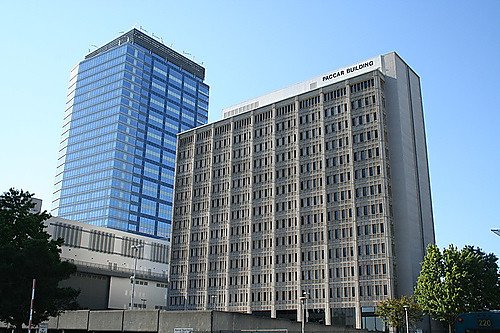Onboarding employees is a crucial step in the employee hiring process. Nevertheless, its importance is often overlooked and can be a severe blindspot of an organization. 53% of HR professionals claim that effective onboarding increases employee engagement. This data proves that onboarding is a vital aspect to build a reliable team with strong company morale, and even more so with remote employees.
Remote employees often feel isolated from the company, so those in charge of their onboarding must do their best to integrate them into the company and make it known that their role is valued and essential. In this article, we’ll further expound upon the basic structure of a remote onboarding process.

What Is Remote Onboarding?
Remote onboarding entails the same vital elements as regular onboarding for office employees. Hirees are introduced to the team and the cohort if any, that they will be working alongside. They are informed of the company’s philosophies, mission, resources, and strategies and are equipped with all the information and tools they need to fulfill their job responsibilities.
So, the only difference there is for remote onboarding is the added importance to communication technology and the difficulties that come with getting someone set up in the company who is not physically present. The onboarding professionals at https://workbright.com/remote-onboarding-best-practices/ provide detailed information that assists companies with this process. Establishing connections and not overwhelming your new employee with a mountain of data can be a challenge when it’s all done virtually, but it is by no means impossible.
What Are the Challenges of Remote Onboarding?
A roadmap needs to be laid out from the very beginning to ensure that the new employee does not get lost in the heap of onboarding information. Without organization and direction, the onboarding process can be stressful. Creating clear-cut milestones spread out over a given timeline is vital in keeping the employee on track.
Connecting with the new hire and making them feel welcome can feel insincere through email. That’s why video conferencing is a valuable tool for businesses with remote employees. Engage your employees with some fun ice-breakers in group calls and find ways to get the whole group talking with each other.
72% of employees claim that one-on-one time with their supervisor is imperative for efficient onboarding. Be willing to deviate from the typical formality of meetings with your remote employee by talking about non-work related topics such as family or hobbies. Informal communication establishes company culture and can go a long way with making your employee feel comfortable and appreciated.
How Long Should the RO Process Take?
The remote onboarding may last anywhere from two weeks to three months or more. Jobs that are higher on the pay scale and involve more duties and complexities in their description will definitely require more training and intel from the company. Studies have revealed that prolonging onboarding support for 1+ years increases employee retention.
Develop an Onboarding Timeline with Clear Steps
The onboarding should be broken up into achievable steps and clearly outlined to the new hire. The steps should consist of pre-onboarding, orientation, first assignments, and ongoing support.
Pre-onboarding is everything that needs to be done before the new employee’s first day of work. The preparations involve providing HR with all the documents and signatures they need and any job training. It is advised that you create a diagram with an ordered list of documents that the employee can refer back to. This will organize a lot of information for them that they can use as a checklist.
Training is not usually considered a part of the onboarding process because it takes an extended time to complete. It’s usually done before the hire begins officially working for the company. The training process will vary depending on the company, but it’s typically an isolated thing done right after or alongside the documentation process.
Training is the time when employees should be able to develop confidence in themselves to execute all job duties. It may also be the first time they interact with many of their associates, so it’s essential to make them feel welcome even though they have not started working for the company yet.
Orientation is often confused with the onboarding process. Orientation is different from onboarding because it is a singular event, whereas onboarding is a continuous process. Orientation is usually a seminar of some kind, or a webinar in the case of remote employees, where new hires will be educated on the company’s mission, history, and culture. This is an opportunity for employees to learn about who they’ll be working for and the company’s purpose.
The first assignments should be given after orientation and after they’ve gotten settled into their new position. It’s a good idea to give new employees a small project for the first two weeks of work. The first group tasks will inspire collaboration early on and provide them with a reason to work closely with their team. This is a key part of the new hire’s integration into the company, as it will set the tone for the coming months.
Within 90 days is when roughly one-third of all attrition happens. When a new employee joins a team, most turnover occurs within the first three months of work when many newbies are left to fend for themselves in their new position. Ongoing support is no option and needs to be provided in order for higher retention. Someone should be assigned to checking in on the remote employees often to make sure they’re not lost or overwhelmed.
These are the basic steps of remote onboarding. Listed below are the more in-depth parts of the onboarding process for remote employees.
Welcome Your Employee to the Team
This essential step happens during orientation and the work on the first assignments. All of the company heads and managers should be introduced during the orientation. It’s a great look for a company if different people from around the office can make time for a video call to the remote employee at some point to introduce themselves. This creates some semblance of a workplace for the employees working from home by allowing them to experience some of the same things they usually would in the office.
The new hire’s colleagues or cohort should be introduced around the time when they’re receiving their first project. It’s best to add new hires to a smaller group within a larger team to build camaraderie and to give them a few people to lean on.
To get the cohort introduced, you’ll need to have a video conference to give them a chance to put names with faces. Ensure you give everyone a chance to share a few things about themselves and try a few fun icebreakers that will spur along with conversation and engagement. If there’s anyone at the company who can meet up for coffee or lunch, it will also help establish the support network for the remote employee.
Start Building Rapport
There are several ways that companies can build rapport with employees, but there are a few key things that will jumpstart rapport in the very beginning. Every new employee’s first day should start with a welcome pack that’s full of little gifts like company swag, office supplies, and snacks. Even a small welcome token will make your new hire feel initiated into the pack. This is also a chance for the CEO or team to send a personal letter welcoming the employee to the team.
A recommendations list of best practices for those working from home also shows that the company is considerate of the everyday struggles of the position. Getting a standing desk or ergonomic chair, moving around and stretching every hour, or wrist rest are just a few suggestions you can give to inform your new hire of ways to stay comfortable.
By providing these things for your employee, you are telling them, “we value your role in this company and want to make sure you’re comfortable in your new position.”
Provide Access to Company Resources and Tools
Equip your new employees with all of the software, hardware, apps, and other various tools they’ll need for their job. Ensuring your new remote hires have everything they need to work is probably one of the most critical steps of the onboarding process, as it will be the catalyst for productivity. It’s ideal to have a centralized fountainhead of information, such as Google Drive or a shared drive of some kind, where your staff can go to find company resources and guidelines.
Healthy communication is the most valued aspect of a workplace for remote employees since they are somewhat isolated from the rest of the company. Get your new hire logged into all the communication apps they’ll use to discuss company matters with their team. Slack is usually the suggested app for larger groups.
Begin Collaboration
As we mentioned earlier, it’s best if remote employees are placed on a smaller team or cohort and given a project right away. This will kickstart collaboration and productivity, and since it’s done as a team, it will lessen the chances of your new hire becoming overwhelmed. If any issues are encountered, then hopefully, the previous steps were thoroughly fulfilled so that they would know where to look or who to call. That’s why it’s so important that the plan is followed through on every level.
Organize a Face-to-Face Meeting
About 20% of remote employees confess that they get lonely. Besides the typical emails, texting, and phone calls made between them and their team, most of their work is done entirely alone. This can cause them to feel like a ghost in the company, as if their role is ignored altogether because they’re not present in the office.
Another way to build rapport and to keep remote employees feeling included is to schedule a face-to-face meeting with someone in the company. You can organize this like a casual meeting where they can discuss how the employees’ work is going and how they’re adjusting to their new position. Listen to any concerns or troubles they might be having and assure them that you’ll do everything you can to keep them comfortable.
Regular Check-Ups
The in-person meeting shouldn’t just be a one-time thing—it should happen several times during the onboarding process. About 69% of employees say that they’re more likely to stay with a company if the onboarding process goes smoothly. However, the opposite will happen if they’re left to fend for themselves.
If they’re lost, confused, or overwhelmed, there’s a chance you won’t know unless you check-in on a new employee. Remote employees are famous for not asking for help when they need it. They pride themselves on being able to complete their work on their own and will have to be drowning before they’ll ask for a hand. So, assign someone the task of checking in regularly.

Ask for Feedback about the Onboarding Process
Asking for feedback accomplishes two things. For a start, asking for feedback builds rapport. By asking for their feedback, you are signaling that this company is open to critique for the betterment of the organization. It also shows that you care about how they were introduced to the company and are open to their suggestions.
The second answer you can get by asking for feedback is finding out where you may have gone wrong in the onboarding process. Sending them a satisfaction survey (Google Forms is a good option, usually) is a quick and easy way to get an overview of how well the process went. Keep the survey simple with most of the questions, either yes or no questions, or ranked on a scale of one to five—request personal feedback at the end.
While remote onboarding comes with its own set of challenges, it’s very achievable if broken into specific milestones and checked off after completing each one. There is no one-size-fits-all model, and what works best for one company might not necessarily work for you. The information here lists the most standard methods that have proven effective. As long as your employees’ best interest is kept in mind, then the onboarding should go swimmingly.









